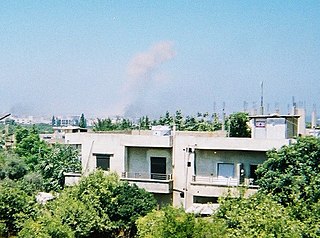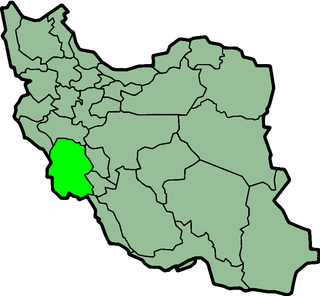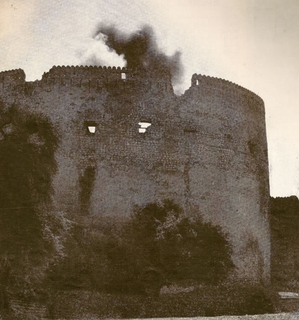 W
WThe 1936 Syrian general strike was a 50-day strike that was organized as a response to the policies of the French occupation of Syria and Lebanon. The strike action paralyzed the country for two months and forced France to negotiate the Franco-Syrian Treaty of Independence with the National Bloc.
 W
WThe 1964 Hama riot was the first significant clash between the newly installed Ba'ath Party leadership of Syria and the Muslim Brotherhood. It occurred in April 1964, after the 1963 Ba'athist coup d'état. The insurrection was suppressed with heavy military force, resulting in 70-100 mortal casualties and partial destruction of the old Hama city neighborhoods. Hama continued to be a center of Islamists and a focal point of the 1976-1982 Islamist uprising in Syria.
 W
WThe 1971 Sudanese coup d'état was a short-lived communist-backed coup, led by Major Hashem al Atta, against the government of President Gaafar Nimeiry. The coup took place on 19 July 1971, toppling the government of the Democratic Republic of the Sudan, but failed to garner support either domestically or internationally. After several days Nimeiry loyalists launched a counter-coup, freeing Nimeiry and toppling Atta's government.
 W
WThe 1972 Moroccan coup attempt was an unsuccessful attempt to assassinate King Hassan II of Morocco on 16 August 1972. The attempted coup d'état occurred in Morocco when a rebel faction within the Moroccan military attempted to shoot down an aircraft carrying the Moroccan king, Hassan II. The attempt was orchestrated by General Mohamed Oufkir, a close advisor to King Hassan. He was assisted by Mohamed Amekrane, commander of the Moroccan air force base at Kenitra. On August 16, four Northrop F-5 jets, acting on Oufkir's orders, intercepted Hassan's Boeing 727 as it returned from France. Reportedly, King Hassan grabbed the radio and told the rebel pilots, "Stop firing! The tyrant is dead!" Fooled, the rebel pilots broke off their attack.
 W
WThe 1979 Qatif Uprising was a period of unprecedented civil unrest that occurred in Qatif and Al-Hasa, Saudi Arabia, in late November 1979. The unrest resulted in 20–24 people killed in what was described as a sectarian outburst of violence between the Shi'a minority and Sunni majority in Saudi Arabia and the beginning of the modern phase of the Qatif conflict.
 W
WOn February 25, 1986, around 25,000 Egyptian conscripts of the Central Security Forces (CSF), Egyptian paramilitary force, staged violent protests in and around Cairo. The riot came as a reaction to the rumour that their three-year compulsory service would be prolonged by one additional year without any additional benefits or rank promotion.
 W
WThe 2007 Lebanon conflict began when fighting broke out between Fatah al-Islam, an Islamist militant organization, and the Lebanese Armed Forces (LAF) on May 20, 2007 in Nahr al-Bared, an UNRWA Palestinian refugee camp near Tripoli.
 W
W2005 Ahvaz unrest or 15 April Ahvaz Protests were violent riots, initiated by Iranian Arabs in the city of Ahvaz in southwestern Iranian province of Khuzestan. The unrest erupted on 15 April 2005, and lasted for 4 days. Initially, the Iranian Interior Ministry stated that only one person had been killed, however an official at a hospital in Ahvaz said that there were between 15 and 20 mortal casualties. Government officials blamed the unrest on Britain, whose troops based just across the border in southern Iraq. Following the unrest, several bombings were carried out in Ahvaz, killing 28 people. In 2006, Iran executed five Arab separatists, convicted of carrying out the bombings in 2005.
 W
WThe "Day of Rage" is the name given by protesters in Bahrain to 14 February 2011, the first day of their national uprising. Inspired by the successful uprisings in Egypt and Tunisia, Bahraini youth organised protests using social media websites. They appealed to the Bahraini people "to take to the streets on Monday 14 February in a peaceful and orderly manner." The day had a symbolic value being the ninth and tenth anniversaries of the Constitution of 2002 and the National Action Charter respectively.
 W
WThe Egyptian "bread riots" of 1977 affected most major cities in Egypt from 18–19 January 1977. The riots were a spontaneous uprising carried out by hundreds of thousands of lower-class people protesting World Bank and International Monetary Fund-mandated termination of state subsidies on basic foodstuffs. As many as 70 people were killed and over 550 injured in the protests, which only ceased with the deployment of the army and the re-institution of the subsidies.
 W
WThe 2012–13 Egyptian protests, were part of a large scale popular uprising in Egypt against then-President Mohamed Morsi. On 22 November 2012, millions of protesters began protesting against Morsi, after his government announced a temporary constitutional declaration that in effect granted the president unlimited powers. Morsi deemed the decree necessary to protect the elected constituent assembly from a planned dissolution by judges appointed during the Mubarak era.
 W
WThe Grand Mosque seizure occurred during November and December 1979 when armed civilians calling for the overthrow of the House of Saud took over Masjid al-Haram in Mecca, Saudi Arabia. The insurgents, led by Juhayman al-Otaybi, declared that the Mahdi had arrived in the form of one of their leaders, Mohammed Abdullah al-Qahtani, and called on Muslims to obey him. For nearly two weeks, Saudi Special Forces, advised by three GIGN French commandos fought battles to reclaim the compound.
 W
WThe Jebel Akhdar War or the Oman War, also known as Jebel Akhdar rebellion broke out in 1954 and again in 1957 in Oman, as an effort by the local Omanis in the interior of Oman led by their elected Imam, Ghalib Alhinai, to protect the Imamate of Oman from the occupation plans of sultan Said bin Taimur, backed by the British government, who were eager to gain access to the oil wells in the interior lands of Oman. Sultan Said received direct financing to raise an armed force to occupy the Imamate of Oman from Iraq Petroleum Company (IPC), a consortium of oil companies that was majorly owned by what is known today as Royal Dutch Shell, Total, ExxonMobil and British Petroleum (BP); the latter was majority-owned by the British government. The Imamate was eventually supported by Arab states. The war lasted until 1959, when the British armed forces decided to take on direct interventions using air and ground attacks on the Imamate, which won the Sultanate the war. The declarations signed by the sultans of Muscat to consult the British government on all important matters, the unequal trade treaties signed by the two sides favoring British interests, the cessation of the Omani Kuria Muria islands to the British, and the vast control over the Sultanate's government ministries, including defense and foreign affairs, exerted by the British rendered the Sultanate a de facto British colony. The UN General Assembly adopted the 'Question of Oman' resolution in 1965, 1966 and again in 1967 that called upon the British government to cease all repressive action against the locals, end British control over Oman and reaffirmed the inalienable right of the Omani people to self-determination and independence.
 W
WThe 30 June protests occurred in Egypt on 30 June 2013, marking the one-year anniversary of Mohamed Morsi's inauguration as president. The events ended with the 2013 Egyptian coup d'état after mass protests across Egypt demanding the immediate resignation of the president. The rallies were partly a response to Tamarod, an ostensibly grassroots movement that launched a petition in April earlier that year calling for the government to step down claiming to have collected 22 million signatures, a figure not verified by independent sources with skepticism over the rise in number by millions in a matter of days, with the Freedom and Justice Party putting the figure at 170,000 signatures. A counter campaign was launched in support of Morsi's presidency which claimed to have collected 11 million signatures. According to the Egyptian military, which calculated figured via helicopter scans of demonstration perimeters across the country, this was "the biggest protest in Egypt's history", with 32 million protesters. However, independent observers have raised concerns about wild exaggeration of the number of actual anti-Morsi protestors with one crowd statistical expert study indicating that a total of a little more than 1 million people protested against Morsi across the whole country.
 W
WThe March of loyalty to martyrs was a protest on 22 February 2011 in Manama, Bahrain. Tens of thousands participated in the protest, one of the largest in the Bahraini uprising. Named after the seven victims killed by police and army forces during previous protests, the march filled the space between Bahrain mall and Pearl Roundabout. Protesters carried Bahrain's flag and demanded the fall of the government, implementation of a constitutional monarchy and other reforms, with some of them also demanding the end of the regime.